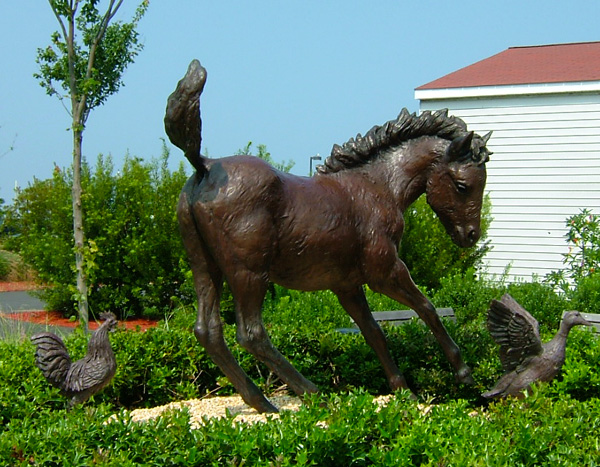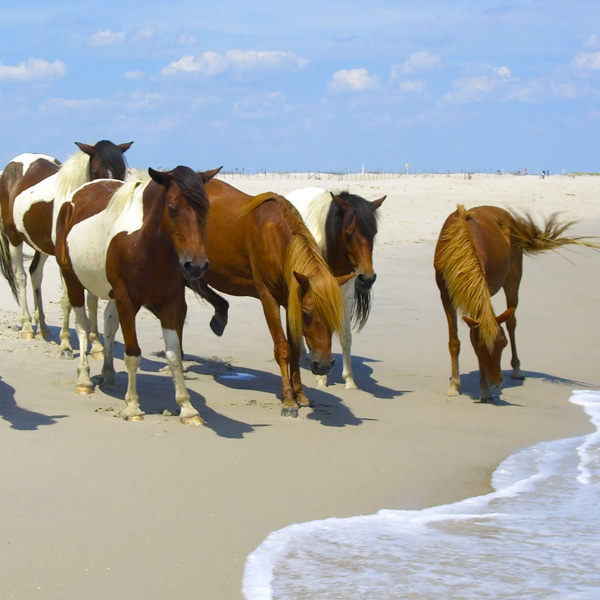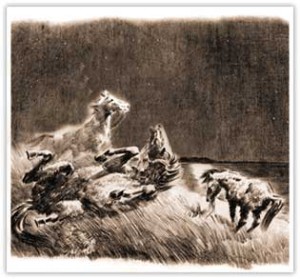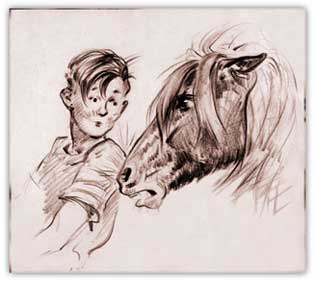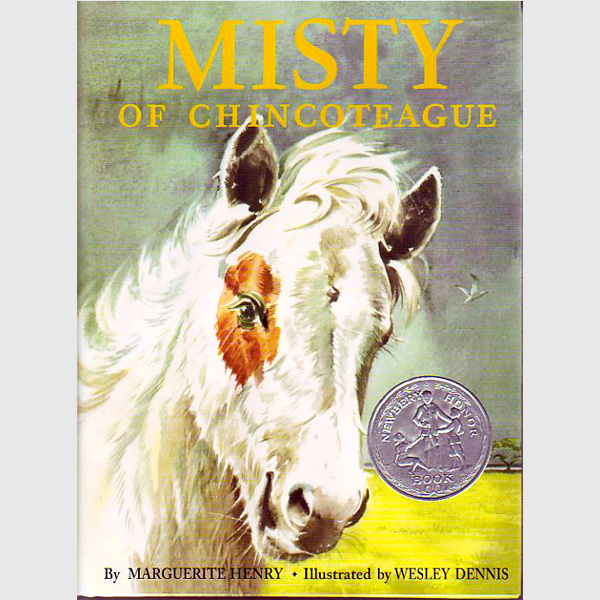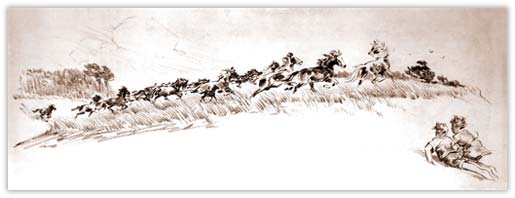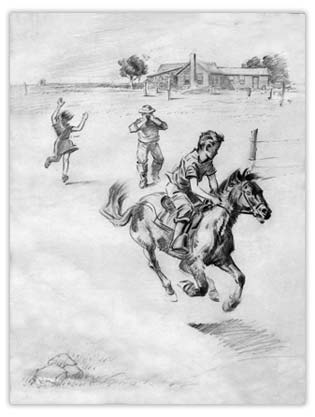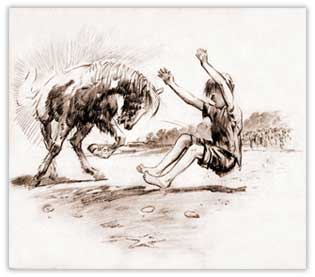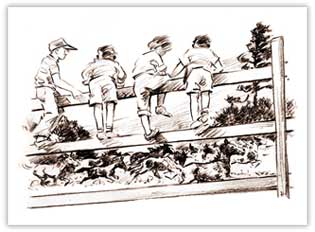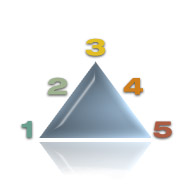Getting into the story
Have you read the wonderful story of Misty of Chincoteague, a real wild pony?
Millions of children have read her story and go to the island where Paul and Maureen raised her. For children like you, the Misty of Chincoteague Foundation had a bronze statue of Misty created. The sculptor, Brian Maughan, spent almost a year watching Chincoteague ponies and creating the statue.
You can see this statue and have your picture taken beside it on Chincoteague Island. Why do you think so many children love horses?
Story Structure for Misty Book
After you read the story of Misty, you might like to study the “story structure” used by Marguerite Henry and other famous authors. Knowing this structure can help you understand literature and write stories of your own.
Have you heard of the American Girl books about historic characters? These stories about brave girls at key points in American history use the same story structure as the Misty story.
In the books about Kaya and Felicity, horses play an important part! Like the American Girl stories, the Misty story is based on real life, but includes made-up story elements to achieve an exciting story structure. You can make up parts of your stories to add excitement, too. After all, this is fiction writing, even if it’s based on real life.
You can think about any story in steps. You know that a story has a beginning, a middle and an end, but did you know there is a 5-step story structure people have used for thousands of years that can help you understand great literature, and make stories you write exciting?
1. The Situation
Who are the characters? Where does the story begin? What’s going on? What’s the main problem? What obstacle does the hero face? This is sometimes called the exposition. In Misty of Chincoteague, the situation is this: Paul and Maureen are fascinated by having wild ponies living on an island near their grandfather’s ranch, where they can see them and hear them. They have helped raise and train these ponies before they are sold, but they have no pony of their own.
2. Rising Action
How does the story build? What complications come up for the main characters? Can you tell what the rising action is for the Misty story?
3. Climax
What is the most dramatic, exciting part of the story, the part where the hero shows his or her strength? This is the turning point. What is the climax for the Misty story? Do you think Marguerite Henry planned ahead carefully so this story would be exciting for you?
You can start your story by thinking of the climax, then building up to it. What would be exciting to your readers? Remember that Marguerite Henry and other authors did a lot of research to make their stories realistic, so you might need to do some research for your story to make the climax believable.
4. Falling Action
How do things work out for the main characters? How do they change as a result of what happened? How does the difficulty unravel? What is the falling action for the Misty of Chincoteague story? What will be the falling action for your story? Don’t forget to wind up all the loose ends of the plot so people reading your story know what happened to the people (or animals!) they’ve come to care about in your story.
5. Ending
What is the solution to the problem you wrote about in the first step? How are things better or worse for the hero? Sometimes this is called the denouement or resolution.
What was the solution in the Misty story? Sometimes there are stories within stories, so there is the ending of the story of Misty’s mother (she swims back to Assateague to be with the stallion who is neighing to her), and an ending to the whole book.
You can tell stories within stories, too. What is the solution to the big problem in the Misty story?
Can you think of simple words that describe these 5 steps happening in the Misty story? Draw an upside-down “V” and write 1, 2, 3, 4, 5 up one side and down the other, then write the key words for the five parts of the Misty story by each number. You can use this way of summarizing stories all the way through school, even in college.
What captions would you give the illustrations from the Misty story? You can print them, label the captions and color them if you like. You can even arrange the illustrations in an “upside down V” on the wall to show the story structure.
These 5 steps in story structure show up in many classic tales. The best English writer of all time, Shakespeare, used these steps in his plays, and so did authors of Greek plays. Television writers learn these 5 steps, too. Your story writing will get a lot better if you use this structure. You can watch for these 5 steps in almost any good story you read., too.

